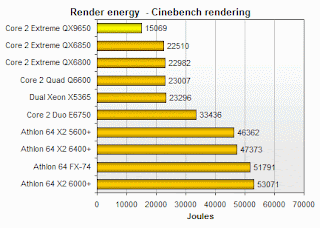Do you recall the numerous times when disillusioned AMD die-hards repetitively say “well if it wasn’t for AMD, there won’t be any competition… ”. With the release of Penryn, Intel's 45nm QX9650 ahead of Phenom whilst adding another level of gap in performance, I really think it's time for the "fanatics" to stop talking such nonsense.
The moment we see Intel sand bagging its “Extreme Edition” to levels just enough to keep a noticeable distance from competition that is the point when we can say that real competition is dead. AMD has stopped pushing Intel to release what’s at the edge of what it can offer and it appears that things won't change much on this front. As AMD tries to squeeze water from a rock with it's soon to be released Spider platform, Intel on the other hand launches a product that beats everything in the market without even trying. The sheer amount of interest in overclocking Yorkfield only points to the untapped capability of Intel's newest 45nm CPUs, ready and waiting when real competition do come around.
Benchmark results on Intel's next generation CPU family is all over the Internet and it continues to look bad for AMD:
I think the key message that Intel wants to come across with the Penryn launch is the noticeable improvement in power efficiency. Performance is only secondary since it is obvious by now that Intel has a tight grip on this crown. Launching the new processors at the existing speed grade of 3.0Ghz is only meant to ensure that everyone takes notice of what 45nm brings to the table. The power efficiency improvements are quite impressive and any performance gains achieved while transitioning to an industry leading process node is just icing on the cake.

As if things couldn't get any worse for AMD, There is another Phenom benchmark review using Crysis that shows exactly what it means for AMD. It's indeed a crisis when you're soon to be released processor is already beaten before it even gets out the door. In the last earnings call when AMD said that Phenom will allow them to enter markets where they couldn’t normally participate, by looking at these latest benchmark they would be lying if they meant the performance market.



